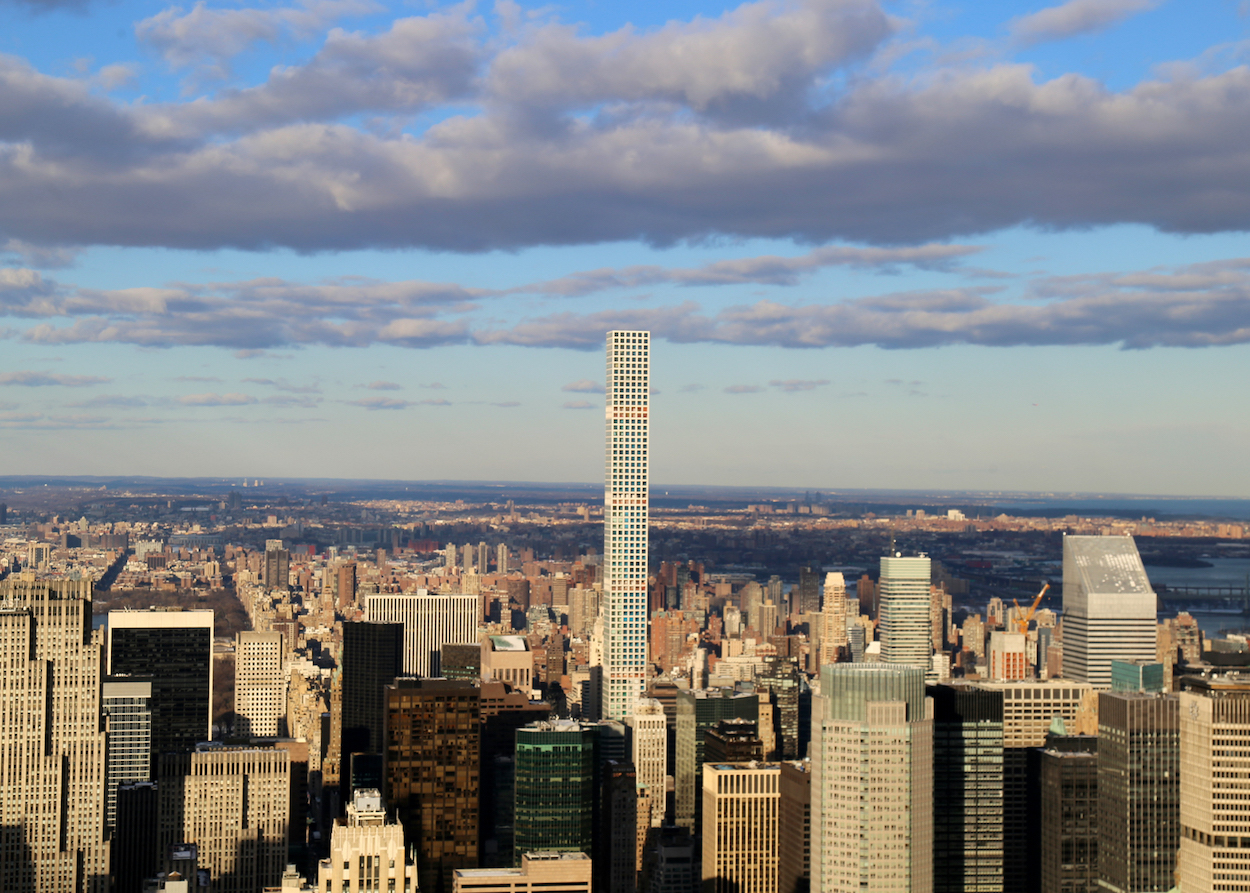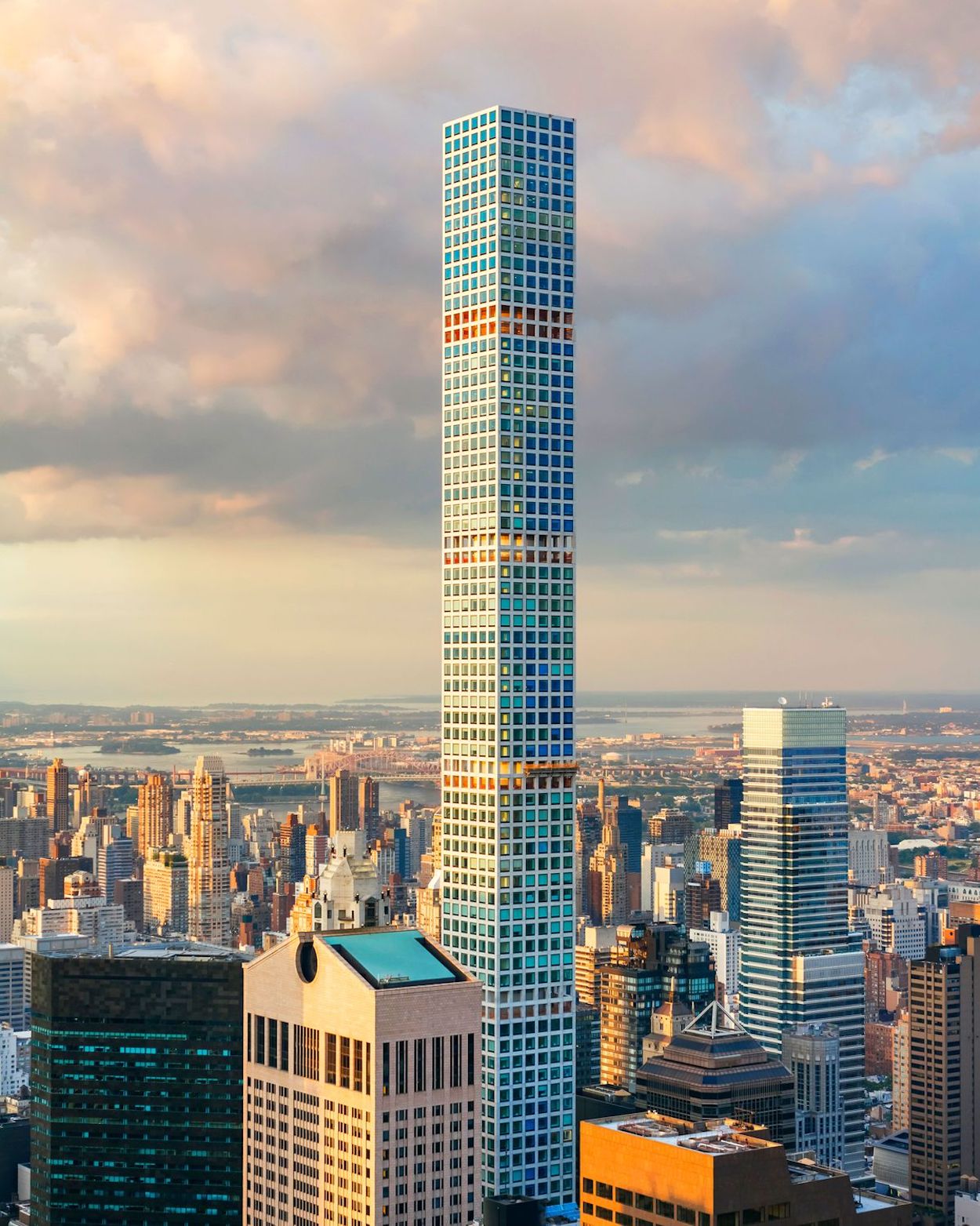If you missed the damning New York Times exposé of what it’s like to live in Manhattan’s 432 Park Avenue, you’re in for gleeful schadenfreude. Developed by CIM Group and Harry B. Macklowe and designed by Rafael Viñoly, the 1,400-foot-tall skyscraper became the Western Hemisphere’s tallest residential building when it opened in 2014. Along with fellow elongated toothpick One57, the $3.1 billion building helped inaugurate what’s now known as Billionaire’s Row, the stretch of ultra-luxury supertalls that redefined the city skyline with a shimmering swath of “middle fingers”—or are they more like sore thumbs?
The high life, it turns out, comes with drawbacks. Residents of 432 Park are reportedly sparring with developers (and each other) over millions of dollars worth of water damage from mechanical and plumbing issues, frequent elevator malfunctions, and unbearably creaky walls when the building shimmies during high winds. Blame the structure’s staggering height, which has far surpassed the engineering breakthroughs required to enable such sky-high trophy apartments.
Behold, the wildest excerpts:
1. When Sarina Abramovich and her husband, who bought a high-floor unit for $17 million, was scheduled to move in, the building was still under construction. “They put me in a freight elevator surrounded by steel plates and plywood, with a hard-hat operator,” she said. “That’s how I went up to my hoity-toity apartment before closing.”
2. 432 Park has suffered several floods, one of which caused an estimated $500,000 in property damage to Abramovich’s apartment. These were caused by a “blown” flange and a “water line failure” that caused water to enter elevator shafts, removing two of the building’s four residential elevators from service for weeks. An anonymous buyer cited a “catastrophic water flood” as grounds to exit a deal to buy an 84th-floor unit in 2016. The building’s insurance costs skyrocketed 300 percent in two years thanks to two 2018 water-related incidents that cost $9.7 million in covered losses.
3. Residents have compared the building’s creaky walls to “the galley of a ship.” The worst of the cacophony comes from the communal garbage chute, which “sounds like a bomb” when bags tumble down.
4. Residents also lamented surging fees at 432 Park’s private restaurant, which is helmed by Michelin-star chef Shaun Hergatt. When it opened, in 2015, homeowners were obligated to spend $1,200 per year on the service; that requirement jumped to $15,000 in 2021 despite reduced hours because of the pandemic.
5. The icing on the cake? “Everybody hates each other here,” said Abramovich, who now faces $82,000 in late fees and interest for refusing to cover recent increases in common charges. (The Times notes that number is more than twice the median household income in the Bronx.) She adds: “Everything here was camouflage.”


